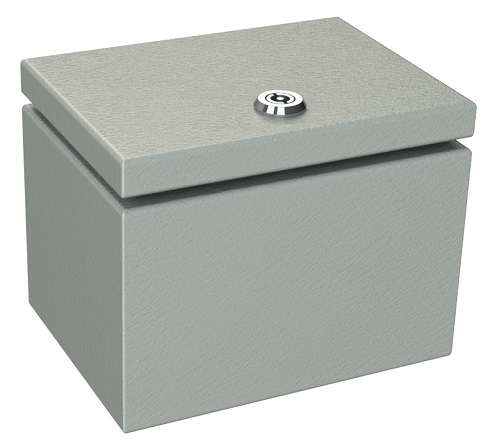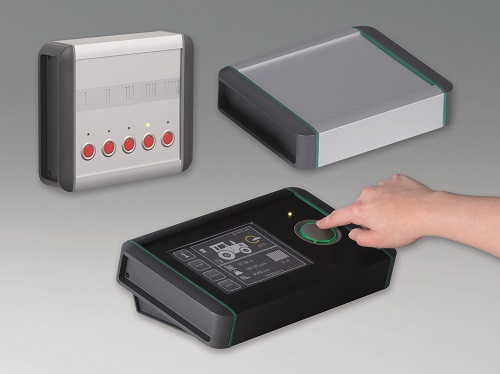By Majeed Ahmad, contributing editor
How do you select the right enclosure for an embedded system? While size, weight, and power are still key elements in choosing a suitable enclosure, there are more factors in play in the design of instrumentation cases and enclosures.
For example, is there sufficient space for the I/O devices? How does a cabinet protect itself from the internal and external hazards? How does enclosure design simplify the assembly work? Below is a sneak peek into what’s driving the enclosure design and how it can serve the embedded system hardware more efficiently.
1. Shelf management options
The new enclosure designs are now helping users to manage and monitor the shelf operation, including power, cooling, and interconnect conditions on the shelf. It leads to greater flexibility, which, in turn, creates more design options.
Take, for instance, the Pigeon Point shelf management for AdvancedTCA enclosures offered by LCR Embedded Systems. The design facilitates a drop-in replaceable arrangement both mechanically and electrically. Moreover, it features dual-redundant and hot-swappable fan trays in push-and-pull configurations and hot-swappable power-entry modules capable of reporting voltage and current on each feed.
A shelf manager can raise the fan level inside the enclosure if the temperature is exceeding a pre-set value. And if that’s not sufficient, the shelf manager can even start powering down the field replaceable units (FRUs) to reduce the heat load on the shelf.
LCR Embedded Systems offers both Pigeon Point and Vadatech shelf management formats. And besides AdvancedTCA chassis, the Norristown, Pennsylvania-based company also provides shelf management options for the VPX form factors.
2. Cooling arrangements
Airflow is crucial in ensuring a stable enclosure operation. The new enclosure and chassis platforms now offer various front-to-rear, side-to-side, and bottom-to-top airflow configurations. Take the case of 9U RiCool chassis platform from Pixus Technologies that features up to 32 OpenVPX backplane slots. Here, reverse impeller blowers reside directly above the boards.
The cooling arrangement pulls air from below the card cage and blows the exhaust 90 degrees to the back. Next, fans are individually hot-swappable, and it enhances reliability and minimizes downtime. Enclosures like RiCool also provide various power supply options in fixed, pluggable, and redundant modes.

Fig. 1: The rackmount chassis platform from Pixus offers various cooling options.
Then there are venting accessories offered by firms like Polycase that facilitate various levels of airflow management and thus help equalize temperature and pressure in the watertight enclosure. These vents come along with cable glands that help maintain a watertight seal around the hole used for cables.
3. Enclosure lids
Enclosure designs require more than just a box because you need to put components, controls, and instruments inside the enclosure with wiring, cables, and conduits. Therefore, many enclosures now come with snap-on lids for easy and cost-effective assembly.
These lids feature a side-edge fold with half shears that allow a solid or perforated enclosure cover to snap into place. Companies like Pixus Technologies offer covers that have side notches for fitting into rails with 160- or 280-mm depths. These snap-on lids also include the EMC gaskets.

Fig. 2: Cover lids on Pixus enclosures enhance the assembly and deployment options.
Likewise, Polycase offers internal panels for its enclosures; these panels allow users to secure components on a flat surface inside the enclosure without having to puncture the box. The Avon, Ohio-based manufacturer’s EX Series aluminum enclosures are a case in point.
The enclosures have been designed to allow a standard PCB to slide into place with removable end-caps, which can easily be modified for cables, connectors, and switches. Here, gaskets sit between the end-caps and enclosure body to provide the IP66-level protection from dust and water. The aluminum material also provides a degree of EMI and RFI protection.
4. Outdoor applications
Besides meeting the National Electrical Manufacturers Association (NEMA) ratings, enclosures for outdoor use should be airtight, and for that, they need to have a gasket between the base and cover to create a watertight seal.
Second, the material used for outdoor enclosures is of vital consideration. Aluminum, stainless steel, and painted steel are metal types commonly used for enclosures in outdoor environments.

Fig. 3: The SB Series NEMA enclosures from Polycase comply with the IP65 and IP 66 ratings.
Polycase has introduced the SB Series stainless-steel enclosures that are waterproof, weatherproof, and corrosion-resistant. These enclosures include an internal panel, external mounting brackets, latch key, and grounding studs and wire. The company is targeting these NEMA-rated enclosures at food and beverage, pharmaceutical, and oil and gas industries.
Some outdoor enclosure manufacturers also use polycarbonate plastic with a UV-stabilizer in the resin. It’s worth noting that ABS plastic, which typically has a lower heat tolerance than polycarbonate, is not suitable for outdoor enclosures unless the resin has specifically been enhanced with a UV-stabilizer.
5. Enclosure displays
There are some enclosure units that offer sufficient space and hardware slots for operating hardware elements like displays. That’s critical in applications such as measurement and control, medical and laboratory instrumentation, and environmental engineering.

Fig. 4: OKW’s table-top and wall-mount enclosure can incorporate 7-in. touch displays.
Enclosures like OKW’s SMART-TERMINAL are designed to fit standard display and touch solutions ranging from 4.3-in. to a maximum of 8-in. sizes. Additionally, the inside of the enclosure has several mounting options on two assembly levels so that displays and PCBs can be optionally mounted face up or face down.
The above trends show that the enclosure design is evolving along with the backplane and chassis platforms. It also shows how accessories are increasingly complementing the overall enclosure designs.
Advertisement
Learn more about Electronic Products Magazine





